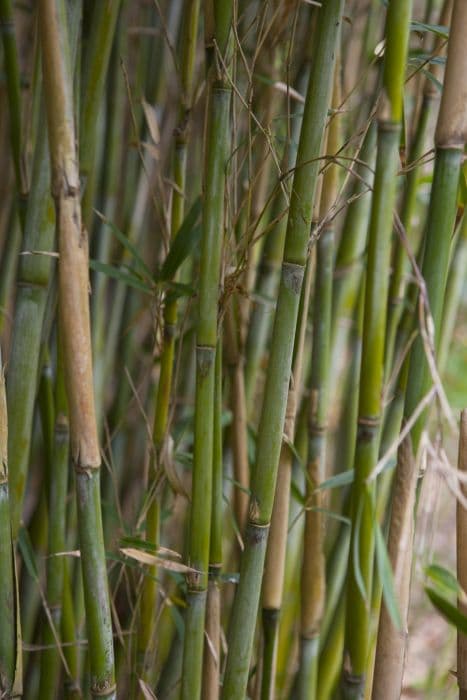Fountain Grass Pennisetum alopecuroides 'Red Head'
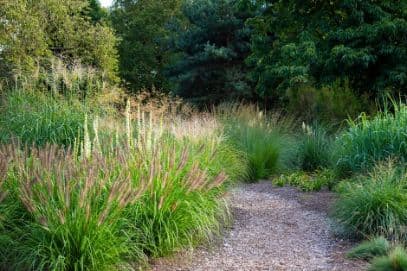
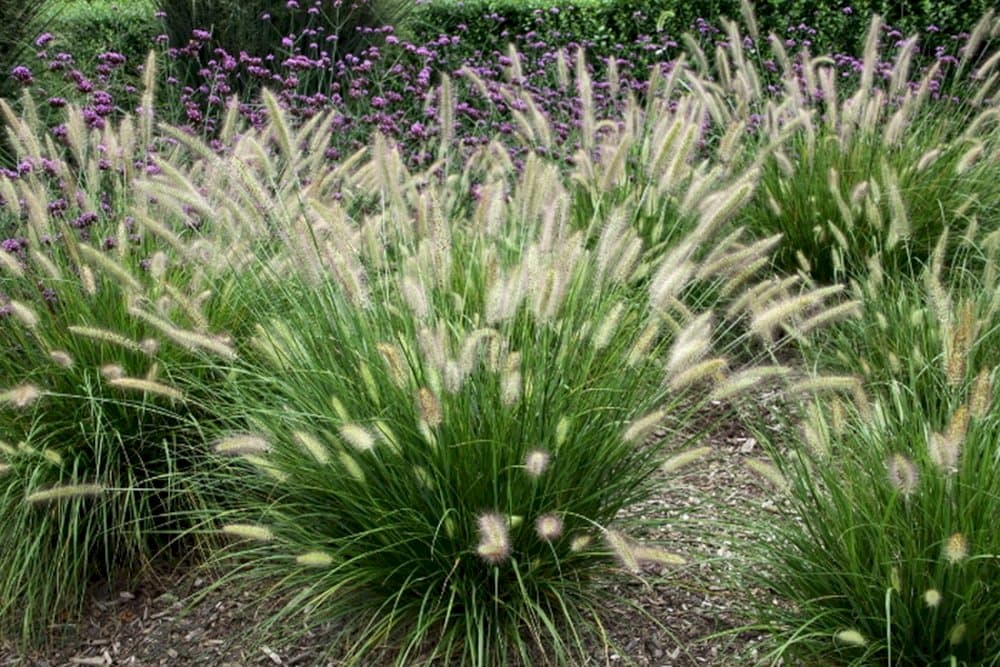
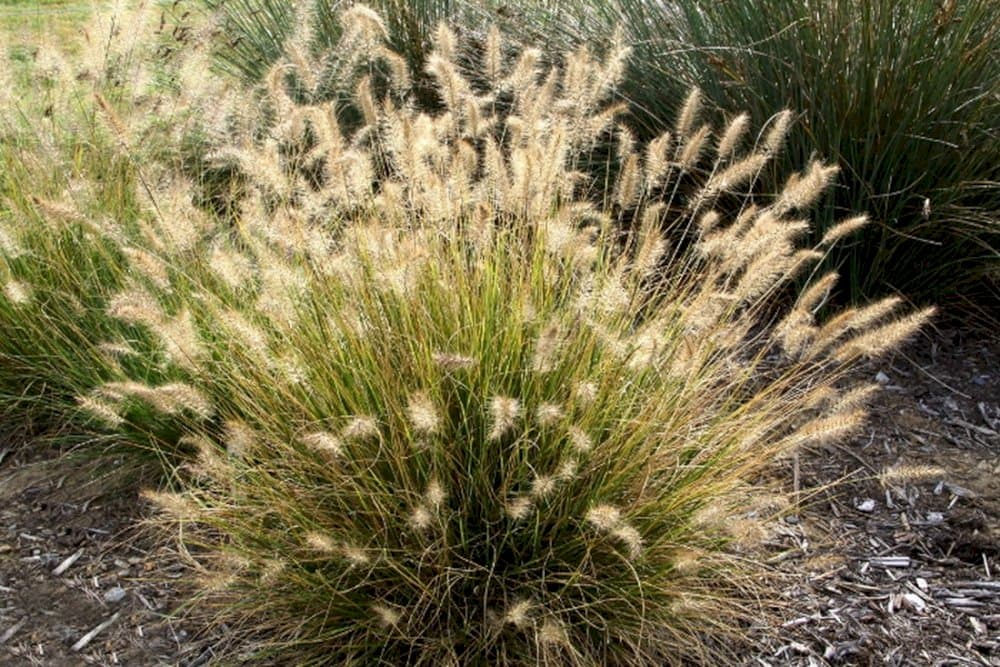
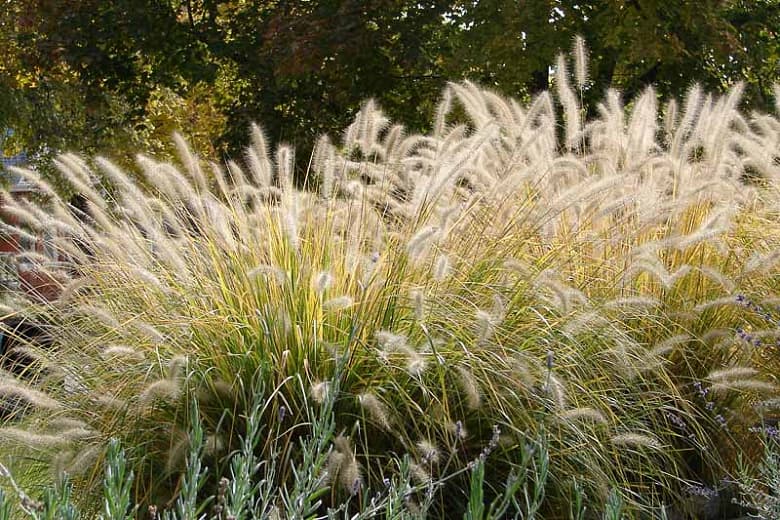
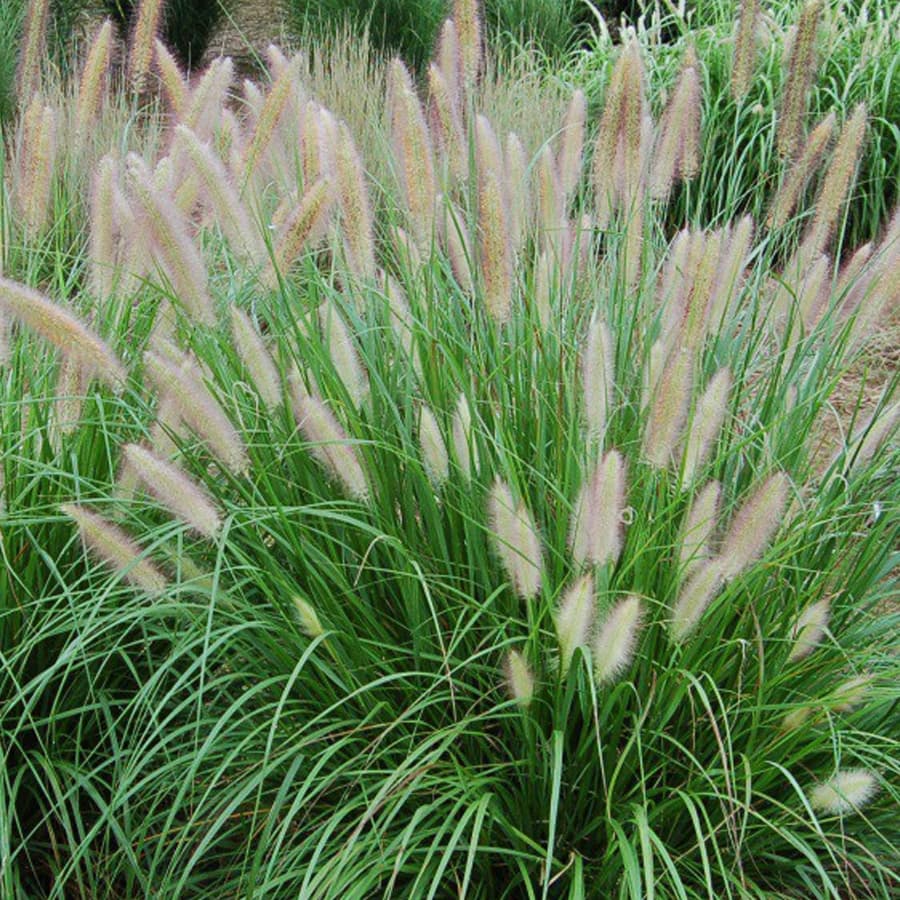
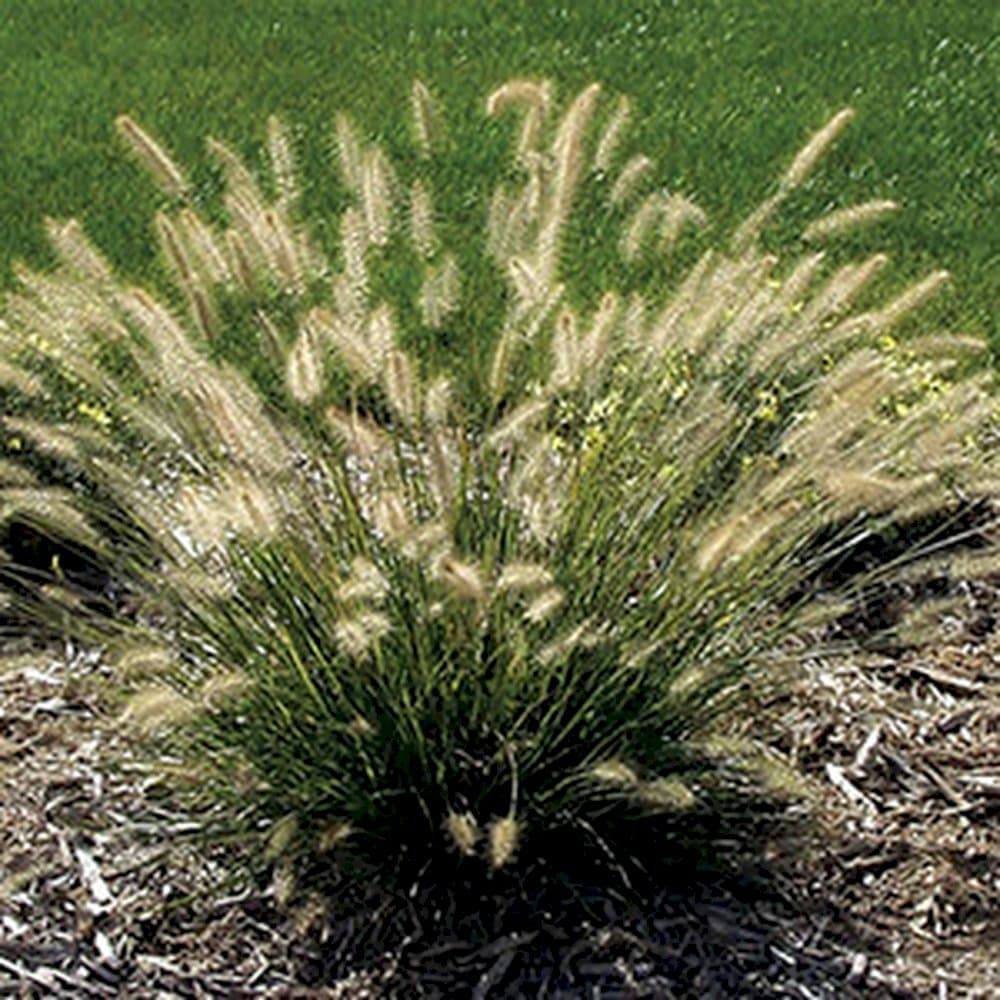
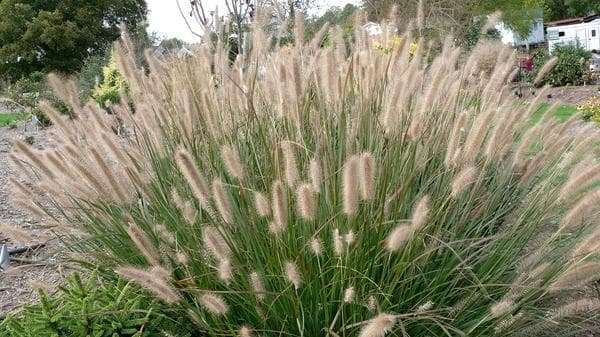
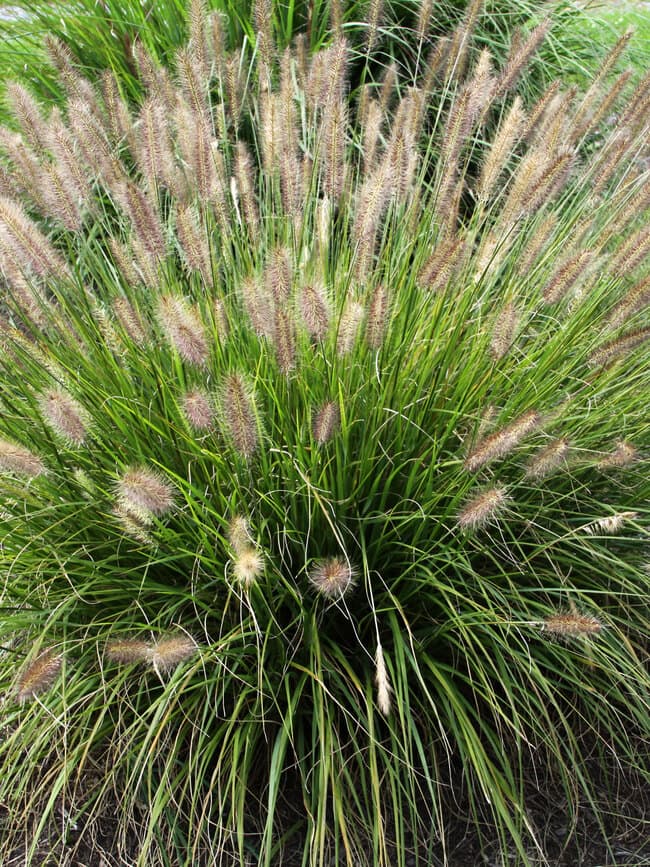

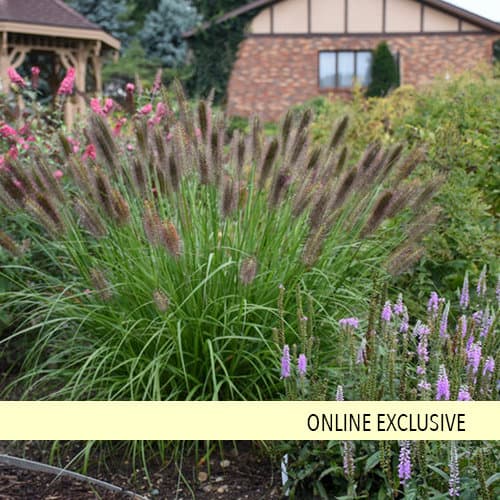
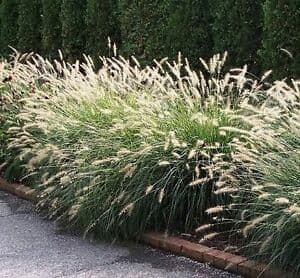
ABOUT
Pennisetum alopecuroides 'Red Head', commonly known as Red Head Fountain Grass, is an ornamental perennial grass well-known for its attractive and showy features. This plant boasts a clumping habit with arching, narrow leaves that can exhibit a green to slightly burgundy tint, particularly under the warm sunlight. The foliage typically takes on a lush, dense and fine textured character, contributing to its graceful appearance in the garden landscape. The most striking attribute of Red Head Fountain Grass is its fluffy, bottlebrush-like flower spikes. These plumes emerge in summer with a smoky purplish-red hue, making them look like soft and fuzzy 'red heads' swaying gently above the foliage. As the seasons progress, the color of the plumes may transition, typically maturing to a gorgeous wheat or tan shade, adding interest during fall and even into winter. Red Head Fountain Grass is often appreciated for its movement in the breeze, adding a dynamic element to garden settings. The plant's overall shape is mound-forming, giving it a neat and tidy look despite its flowy nature. Due to its visually warm-colored plumes and graceful foliage, this variety makes a stunning accent or specimen in gardens, effectively used en masse, or even in mixed containers (where size constraints are not an issue). The contrast of its foliage and the distinctive, soft-texture flower spikes create a dramatic effect that can complement a wide range of garden designs and styles.
About this plant
 Names
NamesFamily
Poaceae.
Synonyms
Fountain Grass, Chinese Fountain Grass, Swamp Foxtail Grass, Red Head Foxtail Grass.
Common names
Pennisetum alopecuroides.
 Toxicity
ToxicityTo humans
Fountain grass is not known to be toxic to humans. Therefore, it generally does not pose a risk of poisoning if ingested and is considered safe around people with regards to its toxicity. There are no specific symptoms associated with poisoning from fountain grass, as it is not considered a poisonous plant to humans.
To pets
Fountain grass is not typically known to be toxic to pets. It is generally considered to be a non-toxic plant to dogs, cats, and other domestic animals. There is no documented toxicity or known symptoms of poisoning in pets from ingestion of fountain grass. However, ingestion of any plant material can potentially cause mild stomach upset in some animals.
 Characteristics
CharacteristicsLife cycle
Perennials
Foliage type
Deciduous
Color of leaves
Green
Flower color
Burgundy
Height
2-3 feet (60-90 cm)
Spread
2-3 feet (60-90 cm)
Plant type
Grass
Hardiness zones
5-9
Native area
Asia Australia
Benefits
 General Benefits
General Benefits- Attractive Foliage: The plant has lush green leaves that add texture to gardens.
- Ornamental Flowers: It produces striking 'Red Head' bottlebrush flowers that can be a focal point in landscapes.
- Drought Tolerance: Once established, it is quite tolerant of drought, making it suitable for xeriscaping.
- Low Maintenance: It requires minimal care beyond initial planting and occasional watering.
- Fast Growth: It can grow quickly to establish itself and fill in landscaped areas.
- Seasonal Interest: The grass has seasonal changes that provide visual interest throughout the year, from green foliage to reddish flower plumes and golden winter color.
- Wildlife Attraction: The flowers can attract birds and other wildlife to the garden.
- Erosion Control: Its root system can help stabilize soil and prevent erosion on slopes or banks.
- Adaptability: It adapts to a wide range of soil types, although it prefers moist, well-drained soils.
- Hardiness: It is generally resistant to pests and diseases and can survive in a variety of climates.
- Versatility in Landscaping: Suitable for use in mixed borders, mass plantings, and as a structural element in garden design.
 Medical Properties
Medical PropertiesThis plant is not used for medical purposes.
 Air-purifying Qualities
Air-purifying QualitiesThis plant is not specifically known for air purifying qualities.
 Other Uses
Other Uses- Pennisetum alopecuroides 'Red Head', commonly known as Fountain Grass, can be used in dried floral arrangements, with its fluffy, reddish flower plumes adding texture and a rustic aesthetic.
- The plant's dried seed heads can serve as natural bird feeders in the garden, attracting various seed-eating bird species during the fall and winter months.
- Fountain Grass can be planted in containers for movable landscaping elements that can be repositioned to enhance different areas of a garden or patio throughout the growing season.
- The dense clumping nature of Fountain Grass makes it an effective privacy screen when planted in a row or as a mass planting, without being as imposing as a fence or wall.
- With its striking foliage and flower colors, it can be used to create a dramatic backdrop in thematic gardens, such as those focusing on a particular color palette or aesthetic mood.
- The plant can be integrated into erosion control schemes, as its root system helps to stabilize soil on slopes and banks.
- Fountain Grass is utilized in crafting and DIY projects for making natural home decor items, such as wreaths or wall hangings.
- Its ornamental value is leveraged in ceremonial events, such as weddings, where its plumes can be included in the design of bouquets, centerpieces, or venue decoration.
- The rustling sound produced when the wind blows through Fountain Grass can be used as an acoustic element in sensory gardens designed to provide auditory stimulation.
- Landscape photographers may use the whimsical seed heads and foliage of this grass for artistic representations of gardens and natural settings, especially with the morning dew or frost highlighting their textures.
Interesting Facts
 Feng Shui
Feng ShuiThe Fountain Grass is not used in Feng Shui practice.
 Zodiac Sign Compitability
Zodiac Sign CompitabilityThe Fountain Grass is not used in astrology practice.
 Plant Symbolism
Plant Symbolism- Graceful Aging: Pennisetum alopecuroides 'Red Head', commonly known as Fountain Grass, often symbolizes graceful aging due to its elegant and arching form that matures beautifully over time.
- Resilience: Fountain Grass is known for its ability to withstand challenging conditions, symbolizing resilience and hardiness.
- Movement and Flow: The swaying of Fountain Grass in the breeze represents flexibility, movement, and the flow of life.
- Privacy and Boundaries: Often used in landscaping to create natural barriers, Fountain Grass can represent the need for privacy and setting healthy boundaries.
- Prosperity: With its full and lush appearance, Fountain Grass can be seen as a symbol of abundance and prosperity.
- Summer and Warmth: As a warm-season grass, it is associated with the warmth and vitality of summer, symbolizing growth and warmth of character.
 Water
WaterFountain Grass needs to be watered regularly to establish deep root systems, but once established, it becomes more drought tolerant. During the first growing season, water the plant once or twice a week, providing about 1 inch of water each time, which is roughly 0.62 gallons per square yard. Once mature, you can reduce watering, but make sure to soak the soil deeply when you do to encourage drought resistance. During prolonged dry spells or extreme heat, supplemental watering may be needed to keep the plant healthy.
 Light
LightFountain Grass thrives in full sun conditions, requiring at least six hours of direct sunlight daily. The ideal spot for planting Fountain Grass is an area where it can bask in uninterrupted sunlight through most of the day. Though it can tolerate partial shade, too little sunlight can lead to reduced flowering and a less vigorous plant.
 Temperature
TemperatureFountain Grass grows best in temperatures ranging between 50°F and 90°F. It can survive in temperatures as low as 20°F, making it suitable for USDA zones 5 to 9. The ideal temperatures for this grass typically occur in late spring through early fall in these zones.
 Pruning
PruningPrune Fountain Grass in late winter or early spring, just before new growth starts, to help maintain its shape and promote healthy growth. Cut back the grass clumps to about 3 to 4 inches from the ground. Pruning encourages fresh, vigorous growth and is also the time to remove any dead or damaged foliage from the previous season.
 Cleaning
CleaningAs needed
 Soil
SoilFountain Grass prefers well-draining soil with a neutral to slightly acidic pH of around 6.5 to 7.0. A soil mix with loam or sandy loam enriched with organic matter such as compost will support its growth adequately.
 Repotting
RepottingFountain Grass, being a perennial, does not need frequent repotting. It's best to evaluate and potentially divide and repot every 2 to 3 years to maintain vigor and manage its size.
 Humidity & Misting
Humidity & MistingFountain Grass is adaptable to a range of humidity levels and does not have specific humidity requirements, thriving in the ambient outdoor humidity.
 Suitable locations
Suitable locationsIndoor
Fountain Grass needs full light and space to flourish.
Outdoor
Place in full sun, well-draining soil, space clumps 2-3 feet apart.
Hardiness zone
5-9 USDA
 Life cycle
Life cycleThe Chinese Fountain Grass 'Red Head', starts its life cycle when its seeds germinate in the spring, requiring warmth and moisture to sprout. The seedlings quickly establish a root system and produce grassy foliage, entering the vegetative growth phase. As the plant matures during the summer, it goes through a period of rapid growth, producing long, arching leaves and soon after, distinctive bottlebrush-shaped inflorescences that start green and transition to a smoky-purple or reddish hue. These flowers mature and turn to a buff color, signalling the plant’s reproductive stage, during which seeds are produced and dispersed by wind or wildlife. In the autumn, the foliage of 'Red Head' may turn golden-brown, adding to the plant’s ornamental value before it enters a period of dormancy in winter, often dying back to the ground in colder climates. The following spring, the plant will resume growth from its rootstock, continuing its perennial cycle.
 Propogation
PropogationPropogation time
Late Spring-Early Summer
Fountain Grass, commonly known as Pennisetum alopecuroides 'Red Head', can be propagated via division, which is the most popular method. This typically occurs in the spring when new growth begins, which provides the plant with the entire growing season to establish. To propagate Fountain Grass by division, one should dig up the clump of grass once it has become sizable and carefully separate it into smaller sections, making sure each section has a portion of the root system intact. These sections can then be replanted into well-drained soil, at the same depth as the original plant to encourage new growth. Regular watering is essential until the new plants are established, usually taking a few weeks.

